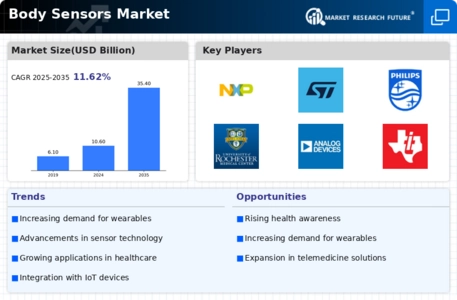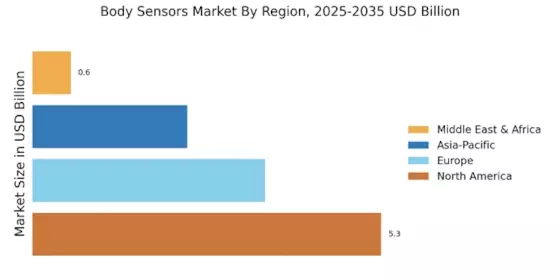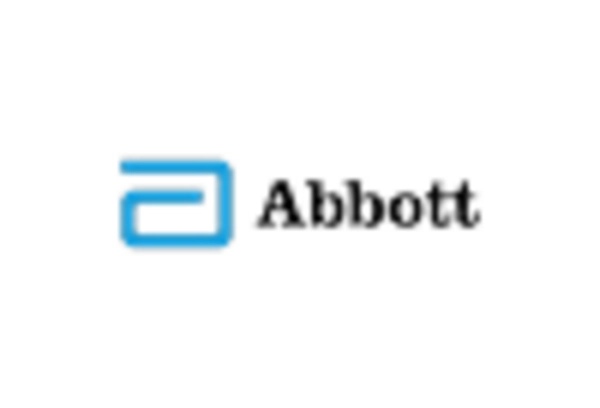The Global Body Sensors Market is characterized by rapid innovation, with a multitude of players vying for market share through diverse applications, technologies, and healthcare solutions.
The competition is intensifying as advancements in sensor technologies, miniaturization, and integration with connected devices pave the way for a burgeoning landscape where body sensors are pivotal in healthcare monitoring, athletic performance, and remote patient management.
Key factors influencing competition include the development of wearable devices, advancements in IoT connectivity, the demand for real-time health monitoring, and regulatory considerations which continue to shape the market dynamics.
Understanding the competitive environment is crucial for stakeholders to strategically position themselves, assess emerging trends, and effectively respond to the evolving needs of consumers and healthcare providers.
Abbott Laboratories represents a formidable presence in the Global Body Sensors Market, leveraging its extensive experience in medical devices and diagnostics. The company excels in developing innovative biosensors that cater to a wide range of medical conditions, enhancing patient monitoring and providing critical data to healthcare practitioners.
Abbott Laboratories showcases strengths including a strong commitment to research and development, which facilitates the incorporation of cutting-edge technologies into their products. Their well-established global distribution network enhances their market reach, allowing them to penetrate diverse markets.
Furthermore, partnerships with healthcare providers enhance their product offerings and reinforce Abbott Laboratories' standing in the competitive landscape of body sensors. NXP Semiconductors holds a significant position in the Global Body Sensors Market, driven by its expertise in providing secure connectivity solutions and sensor technologies.
Known for its key products such as advanced semiconductor solutions that support health monitoring applications, NXP Semiconductors leverages its strengths in high-performance sensing and wireless communications. The company’s focus on creating robust, efficient, and scalable solutions enables seamless integration into various healthcare applications.
Market presence is bolstered by strategic mergers and acquisitions, allowing NXP Semiconductors to expand its product range and enhance capabilities in the health tech arena. Their commitment to innovation, coupled with a solid reputation for delivering reliable and efficient sensor technology, positions them as a key competitor in the global arena of body sensors.


















Leave a Comment